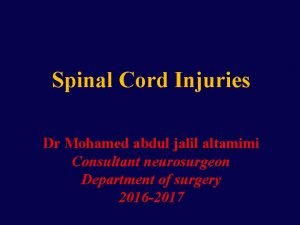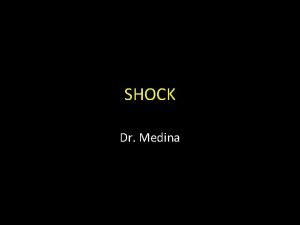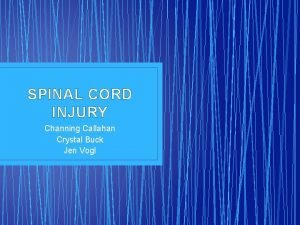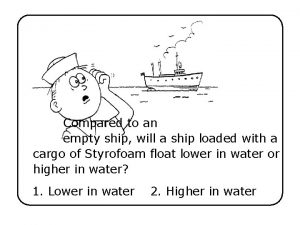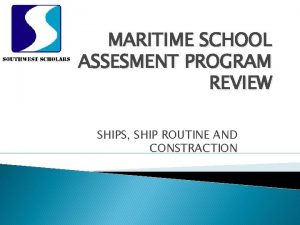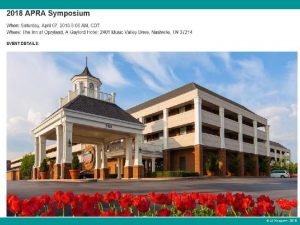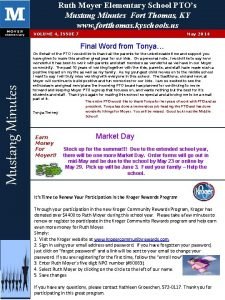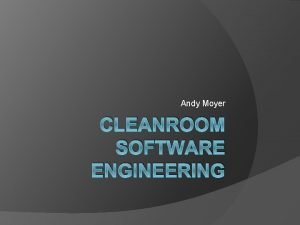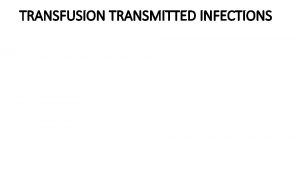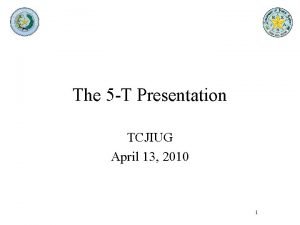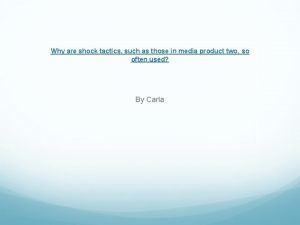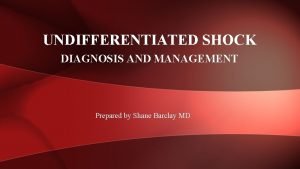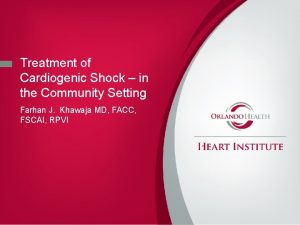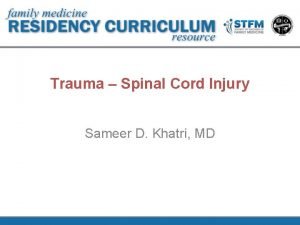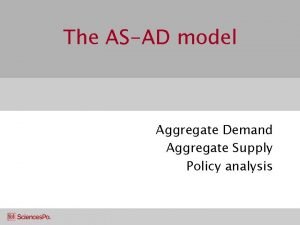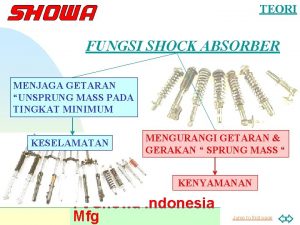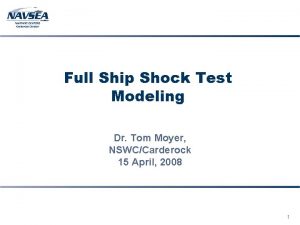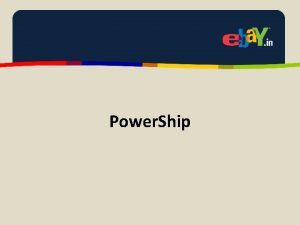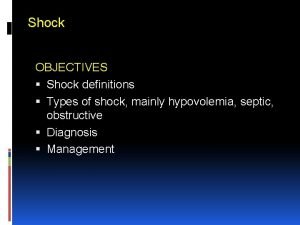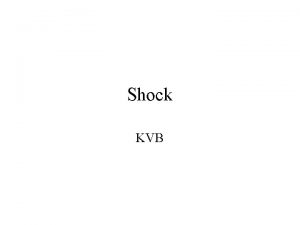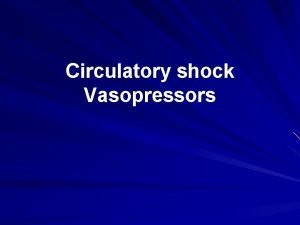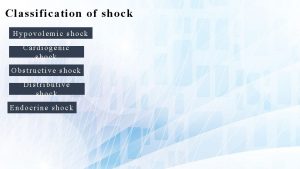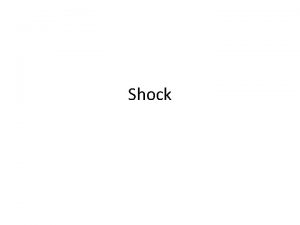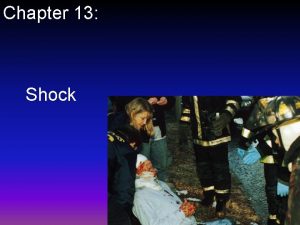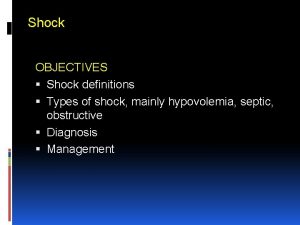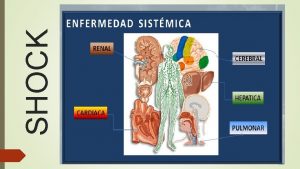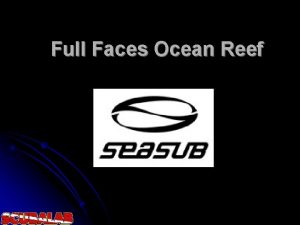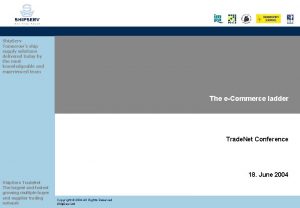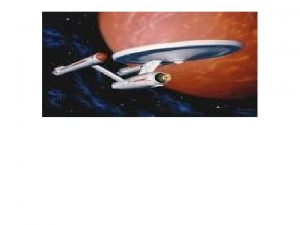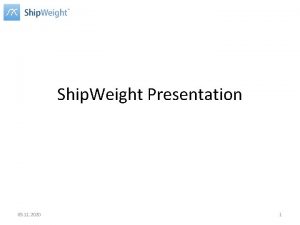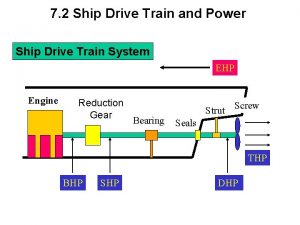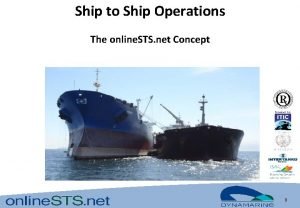Full Ship Shock Test Modeling Dr Tom Moyer


























- Slides: 26

Full Ship Shock Test Modeling Dr. Tom Moyer, NSWC/Carderock 15 April, 2008 1

M&S For Ship UNDEX Response • Modeling & Simulation (M&S) Is Used By The Navy To Predict Ship Structure & Systems Response To Underwater Explosion Threats – Design & Qualification Of Ship Systems – Pre-Test Prediction Of Full Ship Shock Trial Response • M&S Being Evaluated For – More Extensive Use For Design & Qualification Of Ship Systems – Major Component In FSST Alternative(s) 2

Summary of Underwater Explosion Phenomena Surface Reflected Wave Plume SZ Water Bubble at first Minimum Air Spray Dome Bulk Cavitation Region First Bubble Pulse Burst Water Surface Direct Shock Waves Bottom Reflected Wave (Traveling entirely through water) Bottom Reflected Wave (Traveling partially through bottom material) Ocean Bottom 3

DYSMAS DYnamic System Mechanics Advanced Simulation A fully-coupled hydrocode for simulating underwater explosion phenomena and their effects on naval structures 4

DYSMAS DYnamic System Mechanics Advanced Simulation. GEMINI Euler solver DYNA-N & PARADYN Shock and Fluid Dynamics Structural Response Lagrange solvers DFBEM solver Bubble & Fluid Dynamics Standard Coupler Interface Fully Coupled Fluid. Structure Interaction HYDROCODE FOR SIMULATION OF UNDERWATER EXPLOSION EFFECTS 5

DYSMAS V & V Approach Verification Procedure • Documentation of the DYSMAS code and its capabilities • Documentation of configuration management & model verification calculations • Documentation of laboratory and small-scale validation calculations ð Comprehensive report applicable to UNDEX applications Validation Procedure (Phase I - General Validation) • Acquire validation-quality UNDEX loading and hull response data for platform design and weapon lethality applications using surrogate ship • Pre- and post-test comparisons of DYSMAS simulations vs test data ð Code validation against full-scale, realistic ship structure Validation Procedure (Phase II - Applicationspecific Validation) • Design & acquire validation-quality UNDEX loading and response data for specific (local) platform structures 6 ð Code validation against design-specific concepts

TYPICAL DATA ANALYSIS Full Record 1/e * Pmax Shock Wave (extended) 1 st Bubble Pulse 7

EFSP 8

Lagrangian Model • 16, 165 Nodes • 21, 053 Elements 9

Results – Innerbottom, Vertical Velocity Below FWD STBD Mount 8976 FWD 10

Eulerian Simulation T: 5. 0 msec T: 5. 4 msec T: 5. 9 msec T: 6. 8 msec T: 8. 3 msec T: 11. 8 msec 11

Lagrangian Simulation T: 6. 2 msec T: 10. 0 msec T: 13. 2 T: 50. 0 12

Innerbottom Vertical Acceleration DYSMAS vs EFSP Test FWD 60 lbs HBX, 20 ft Hrz Stdf 13

DYSMAS/SUMMARY • DYSMAS Is Widely Used In Navy Community For UNDEX Simulations • 2007 JASON Review Concluded – Good Agreement With Liquid Response – Good Agreement With Short-time Structural Response – Structural Response [After Initial Impulse] Can Be Improved – A validated M&S could evaluate/improve componenttesting methodology 14

Beyond DYSMAS => CREATE • DYNA_N/PARADYN Lack Many Of The FEM Features Needed For Improved UNDEX Simulations • DYNA_N/PARADYN Employ Antiquated Software Constructs – Maintenance Difficult/Time Consuming – Adapting To Evolving Computer Hardware Challenging • Gemini Is Sufficiently Validated & Employs Modern Software Engineering Constructs • Standard Coupler Interface Limits Calculation Scaling On Parallel Platforms SOLUTION: Develop Gemini/Lagrange Solver With Parallel Coupling 15

CREATE Objectives For UNDEX • Develop Robust Computational Capability To Predict – Response Of Surface Ships & Submarines To UNDEX Loading • System/Component Environments • Structural Response & Damage – Scenarios • Stand-Off UNDEX • Close-In UNDEX • SURFEX – Interface w/ Ship State Modeling • ASAP/ARM • FASST 16

CREATE USE CASE I Standoff UNDEX Response • Objective: Quantify ship response to standoff UNDEX shot geometries • Problem Characteristics: – Linear-elastic hull structure (no appreciable damage) – Point-to-point non-linear elements (e. g. , shock mounts) – Linear-elastic equipment & system response • End-User Products – Quantify equipment location shock environments – Specifications for isolation systems (mounts & rafts) – Develop more-representative equipment qualification environments for component-level testing 17

CREATE USE CASE I Standoff UNDEX Response • Capabilities from CREATE program: ØIntegrated modal analysis capability – Integrated (implicit) static pre-calculation capability • Hydrostatic pre-stress, static bending moment ØOptimized explicit code solution procedure for pure linear-elastic problems • Bulk of design cases ØImproved modal characteristics of equipment & systems • Enables smoother, more accurate incorporation of vendor sub-models ØResults Synthesis => Design Requirements, Performance Assessments, Design Modifications ØFully Integrated With Ship Design Tools ØIncludes Integration w/ ASAP/ARM – Development of “REPLAY” strategies ØMeets All Requirements For FSST Replacement Calculations 18

CREATE USE CASE II Severe UNDEX Response • Objective: Quantify equipment response and damage to more severe shot geometries • Problem Characteristics: – Non-linear hull structure response – Point-to-point non-linear elements (including shock mount bottoming) – Non-linear equipment and system response • End-User Products – Equipment and system damage and operability assessments – Hull structural performance – LFT&E Assessments (w/ limitations) 19

CREATE USE CASE II Severe UNDEX Response • Capabilities from CREATE program: – Includes list from Use Case I – Multi-length scale modeling strategies ØAll-up simulation capability • Telescoping analysis strategies • Applications using “REPLAY” functions – Fragility assessment capability ØEnables design margins to be assessed ØEnhanced Mission Effectiveness Assessment ØEnhanced Results Synthesis Methodology ØQuantification Of Margin & Uncertainty 20

CREATE USE CASE III LFT&E Assessments • Objective: Quantify ship structural damage due to LFT&E UNDEX scenarios • Problem Characteristics: – Extremely Non-linear hull structure response • Large hull deformations w/ Significant Contact & Significant Material Failure – Time Evolutionary Structural Degradation • End-User Products – Primary structural damage – Cascading structural damage effects – Equipment and system damage and operability assessments 21

CREATE USE CASE III LFT&E Assessments • Capabilities from CREATE program: – Improved failure models & failure criteria ØDamaged based failure models – More-accurate damage progression ØEnergy conserving damage propagation – More-accurate damage patterns ØFracture based damage models (perhaps) ØParticle methods (perhaps) – More-accurate contact algorithms ØNo miss contact detection ØEnergy/Momentum conserving forces 22

Technical Approach • Integrate Gemini Into Evolving SIERRA Architecture From SNL – Leverage Existing Substantial DOE Commitment • Evolve SIERRA To Address – More Efficient Parallel Workload Distribution – General, Scale-able Euler/Lagrange Coupling • Enhance Lagrange Capabilities In SIERRA For UNDEX Requirements – – Robust Structural Element Library Multi-Length Scale Modeling Modal Sub-Structuring (CMS) … 23

CREATE/UNDEX Development Team Organization CREATE UNDEX Navy Lead Leveraged Related Programs • ONR • NAVSEA • OSD CREATE UNDEX M&S Development NSWC/CD Lead Software Design Working Group SNL Lead Board Of Advisors • Navy Technical Authority • PEO Ships • PEO Carriers • PEO Submarines • OSD • Subject Matter Experts Langrange Element Working Group NSWC/CD Lead Euler Element Working Group NSWC/IH Lead Results Synthesis Working Group NSWC/CD Lead 24

CREATE/UNDEX Schedule 25

Summary • DYSMAS Provides Navy UNDEX Response M&S Capability Sufficient For – FSST Alternative – Limited System Design/Qualification Support – Limited Structural Damage Prediction Capability • CREATE/UNDEX Capability Will – Expand Application For System Design/Qualification – Enhance LFT&E Assessments – Support Design Of Cheaper & Safer Ships 26
 Hangman fracture
Hangman fracture Shock normovolemico
Shock normovolemico Spinal shock vs neurogenic shock
Spinal shock vs neurogenic shock T10 spinal cord
T10 spinal cord Spinal shock vs neurogenic shock
Spinal shock vs neurogenic shock Difference between empty ship and loaded ship
Difference between empty ship and loaded ship Ship ship routines and construction
Ship ship routines and construction Modeling and role modeling theory
Modeling and role modeling theory Dimensional modeling vs relational modeling
Dimensional modeling vs relational modeling Keegan moyer feet
Keegan moyer feet Jj keegan
Jj keegan Baaqmd login
Baaqmd login Ruth moyer elementary
Ruth moyer elementary Does clemson have a wrestling team
Does clemson have a wrestling team Cleanroom software engineering
Cleanroom software engineering Go 910
Go 910 Symbols in the devil and tom walker
Symbols in the devil and tom walker Tti testing
Tti testing Omnixx login texas
Omnixx login texas Shock tactics definition
Shock tactics definition Unit 15:3 providing first aid for bleeding and wounds
Unit 15:3 providing first aid for bleeding and wounds Shock ddx
Shock ddx Detroit shock initiative
Detroit shock initiative Spinal vs neurogenic shock
Spinal vs neurogenic shock Duscher transition shock
Duscher transition shock Aggregate supply equation
Aggregate supply equation Fungsi shock absorber
Fungsi shock absorber
